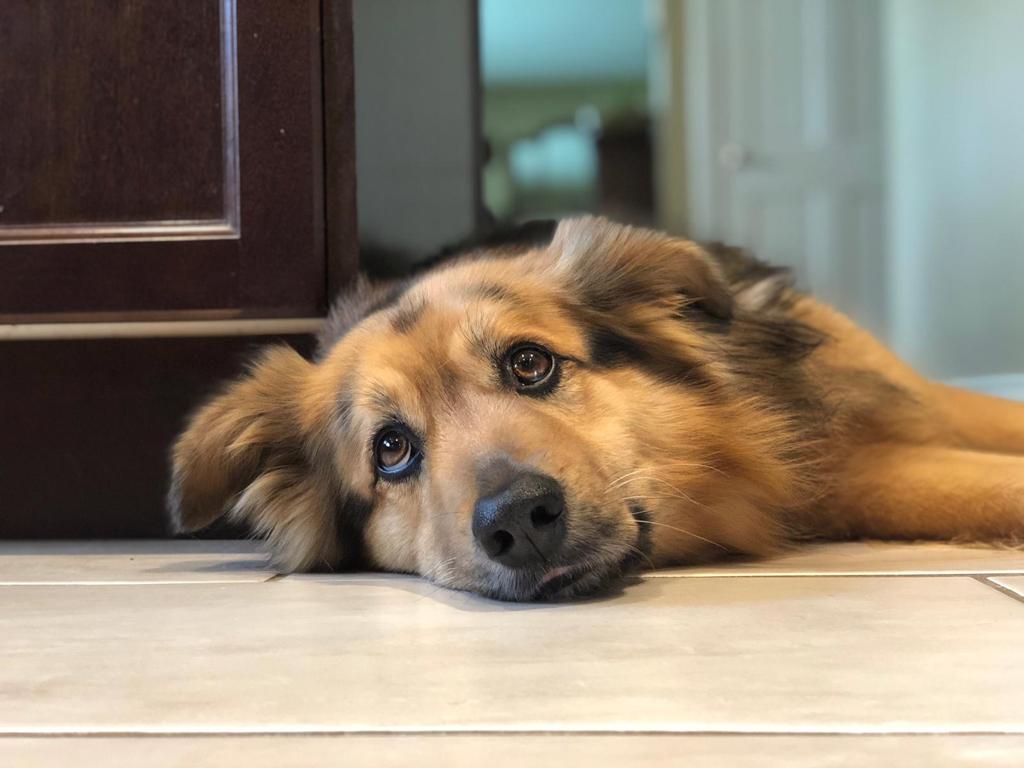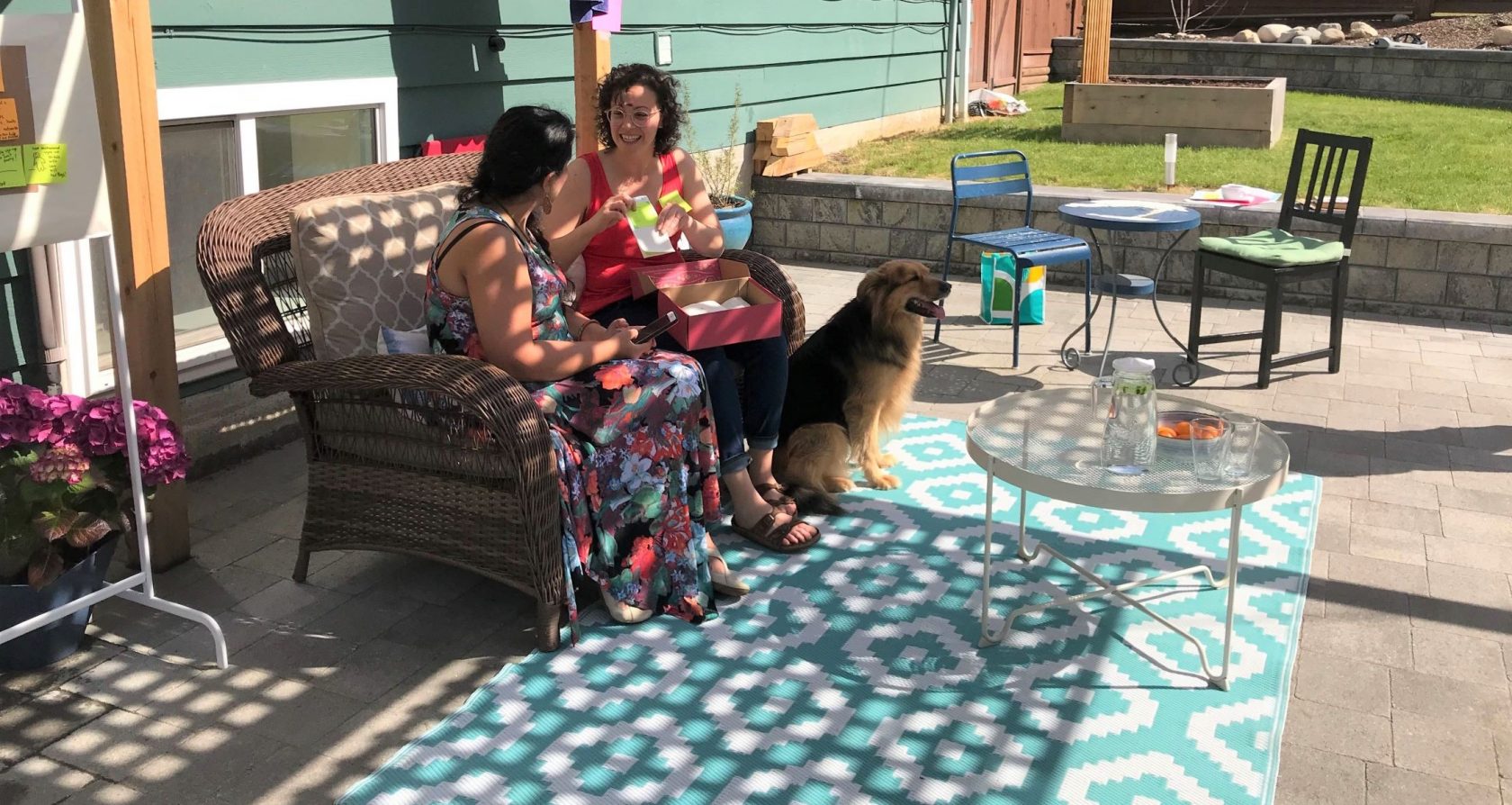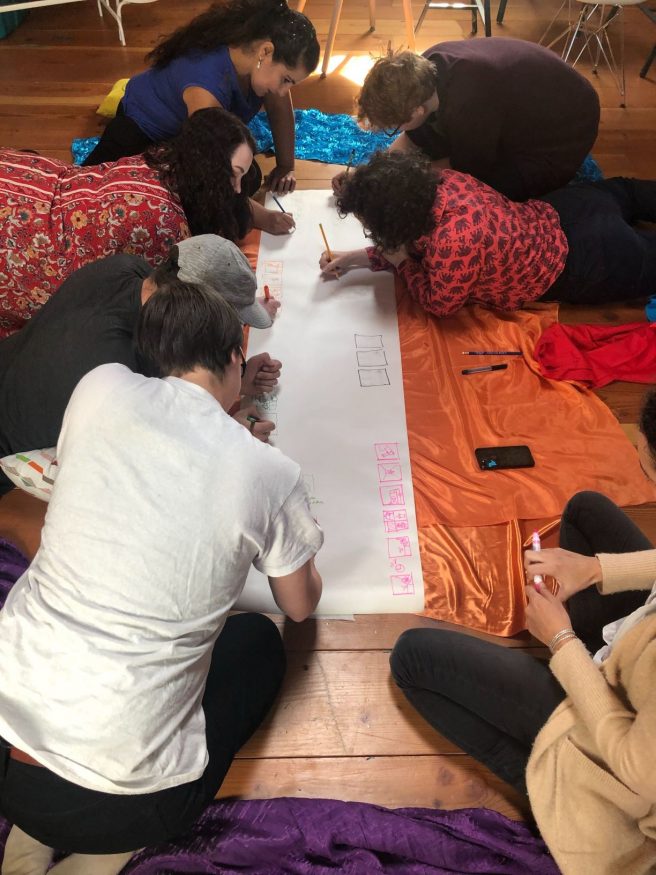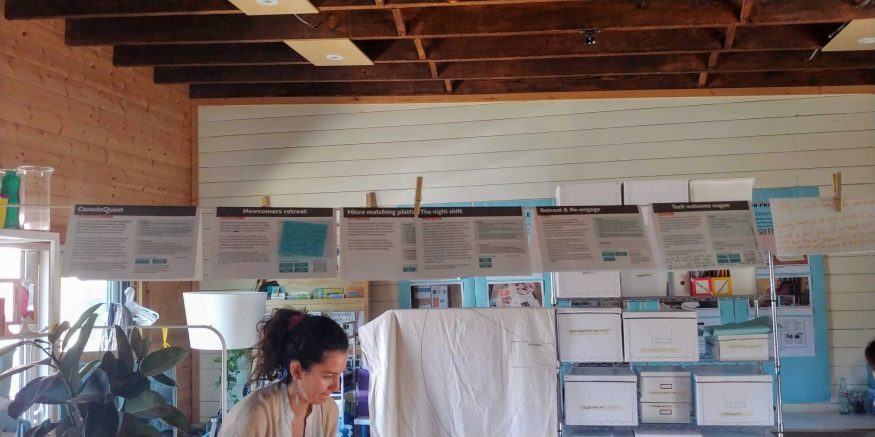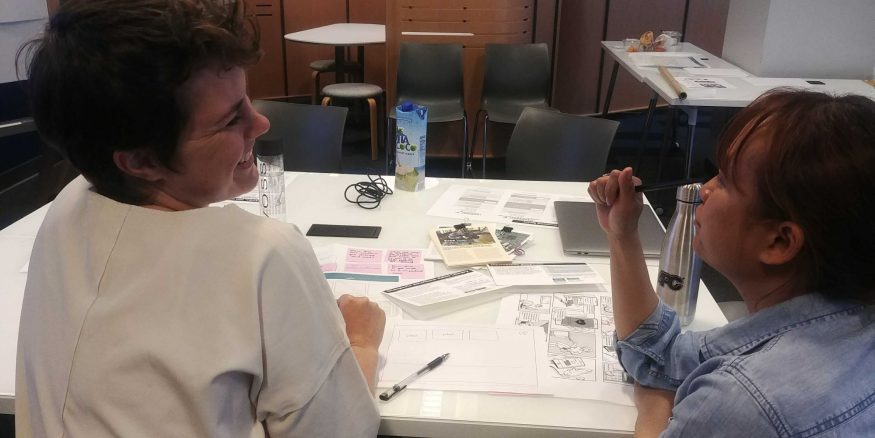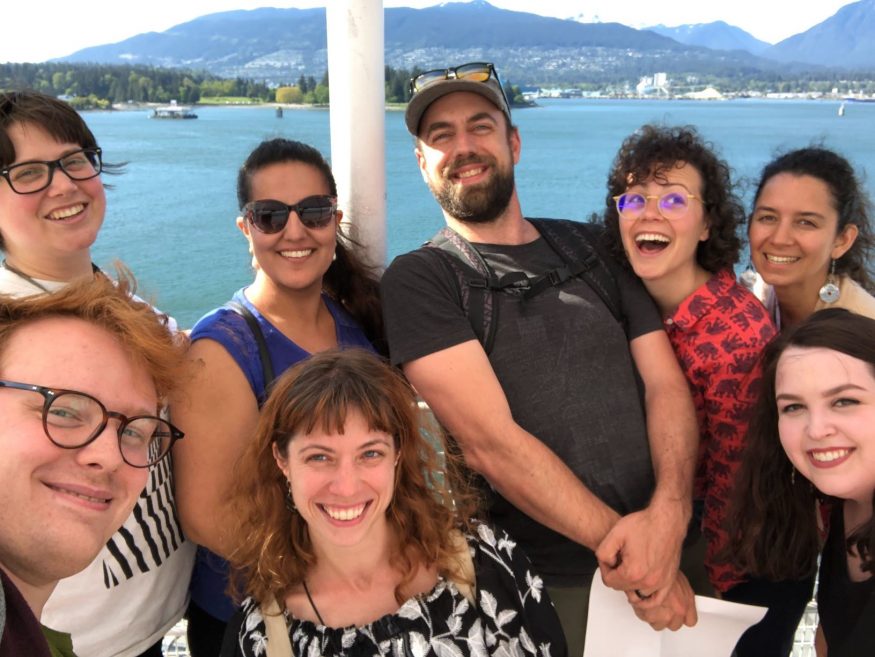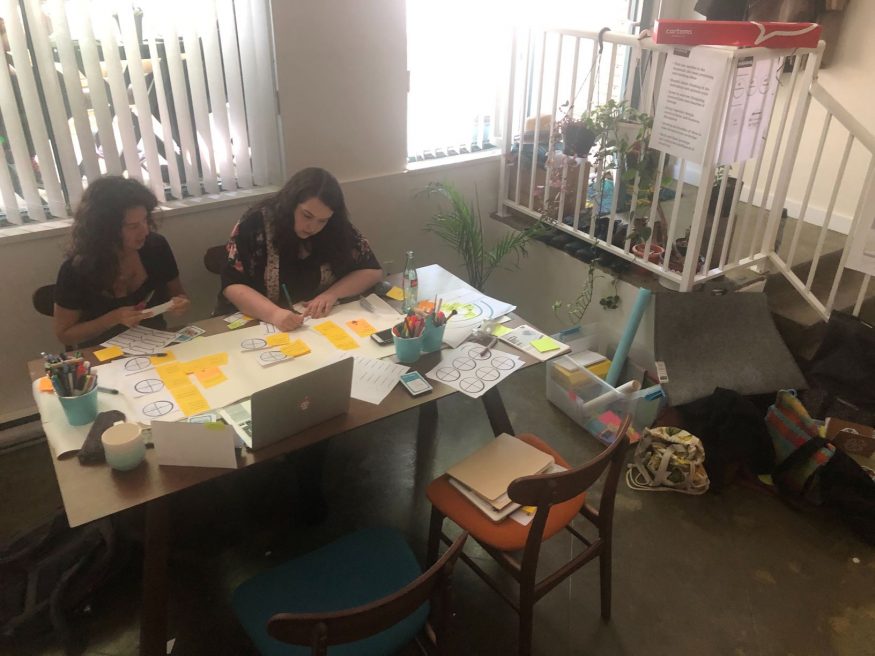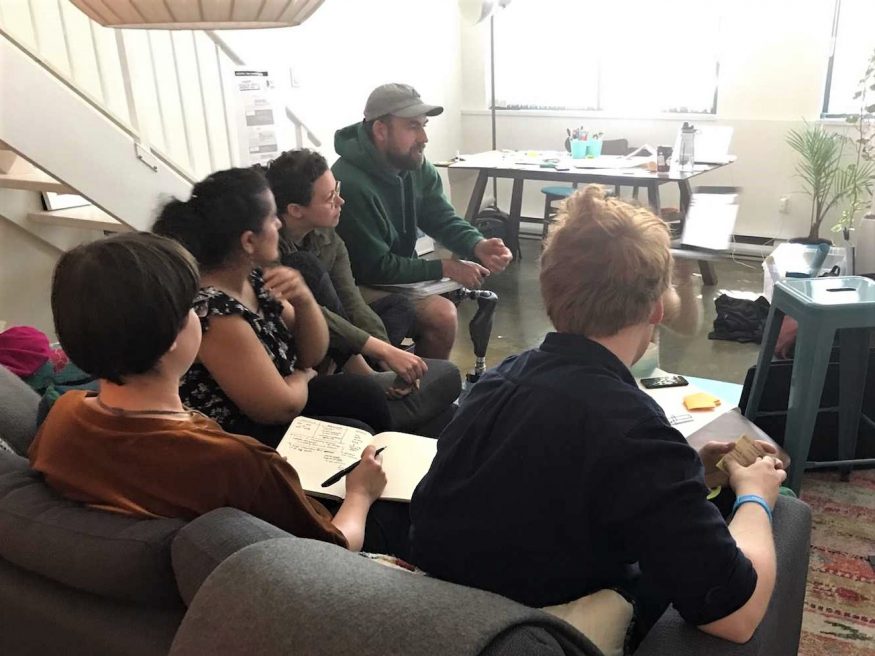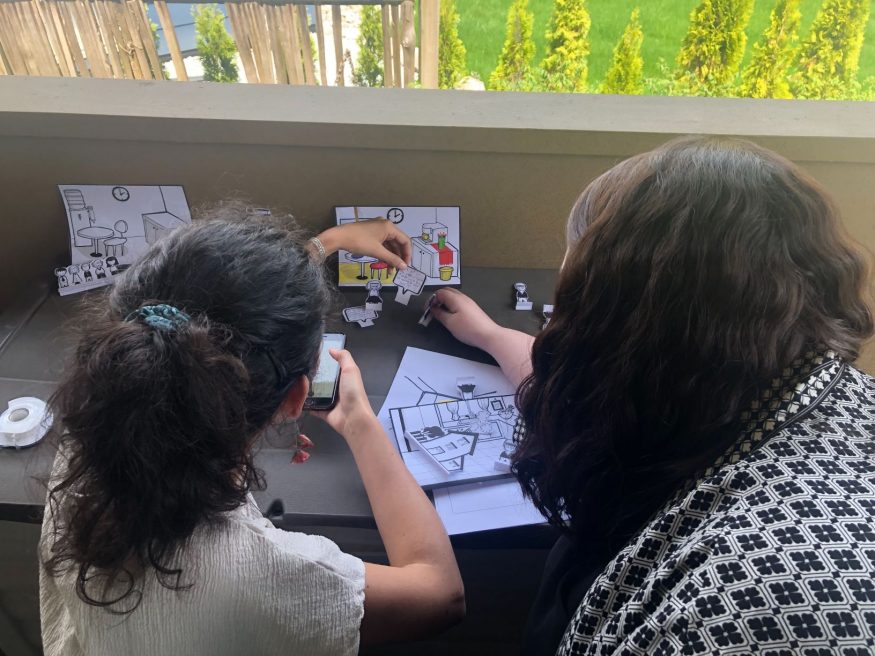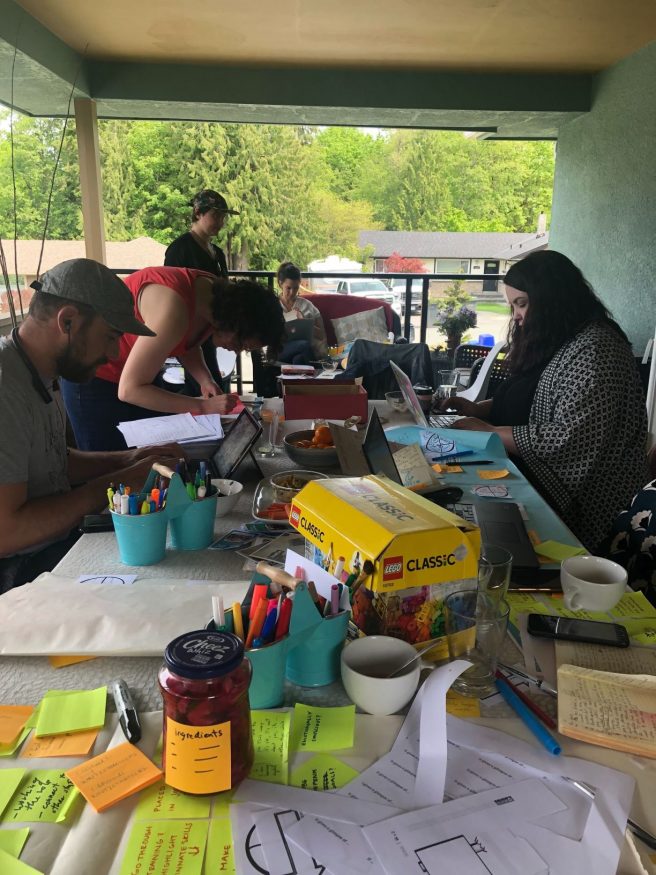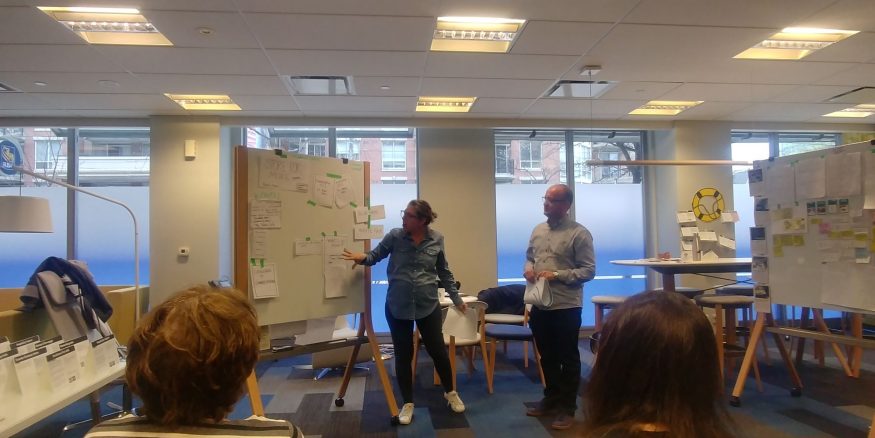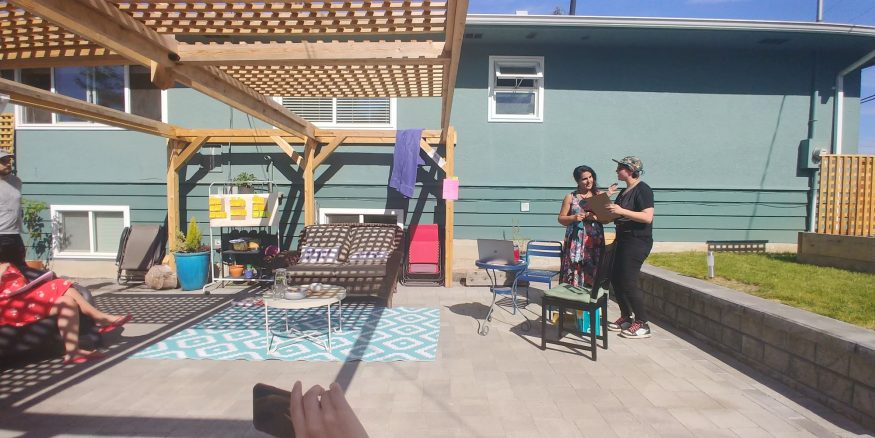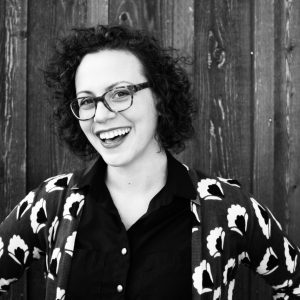As promised in my last blog, we mobilized Elevate! – the hottest board game to transform research into ideation. Across three provinces, we played with various audiences and encouraged big, bold, and plentiful ideas.
Oh, how we played…
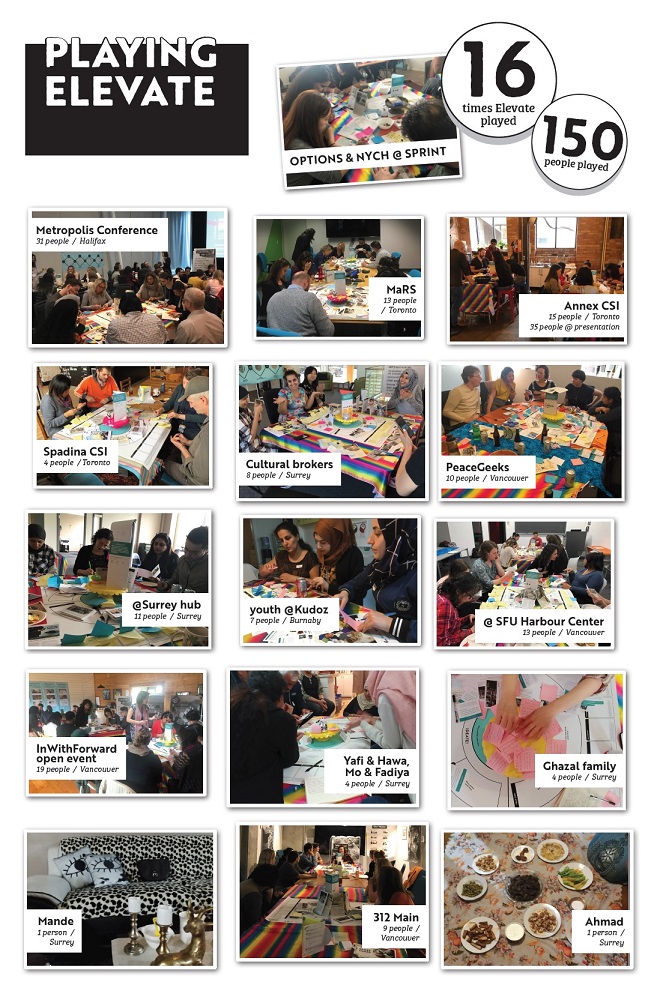
Thank you to everyone who co-hosted, engaged with us, ideated, and elevated!
With all these ideas, we had six goals for the sprint:
- Find our needles in the haystack: the most promising and exciting ideas
- Bundle ideas that target different scales of impact: individual to systems level
- Zoom in and out: from interactions to theories of change
- Bring together design, social science and business disciplines
- Develop ideas to choose from as we move into co-design
Due to transitional office space woes, our west coast Sprint was dynamic and had a new location each day!
Zoom in & out: interactions to theories of change
DAY 1: Strategy & Design Day
Idea rescue, Roleplay & Storyboarding
Setting: InWithForward Shed (BC); RBC Innovation Room (ON)
Aim: Decide which ideas to take forward to visualize & develop. Storyboard those ideas. Get inspired.
Last week, we prepared for our sprint by weeding through ideas. First, we removed what felt familiar to what already exists. Then, we dropped or borrowed from those that didn’t have enough form to run with. Next, we clustered and sometimes amalgamated similar ideas. Eventually we narrowed to 22 ideas with the potential to develop next practice, and address the pain points of newcomers.
It turns out the games weren’t over yet. In order for us to move from 22 ideas to six, we all hopped into the “Lifeboat” of ideas. There wasn’t much room in our boats, so we had the tough decision of choosing which of the weighty ideas to bring with us. Each team politely battled* over which ideas would move forward.
Having figured out our six, we got into teams to take ownership over each idea, roleplay, and storyboard! A great way to flex one’s drawing skills, storyboarding shows how the idea works through essential interactions. Sketching someone from our research, we imagined: how might Yafi move through this? It helps us develop a believable narrative and surface vexing questions.
On the Surrey side, we ended design day with a field trip to the immersive video amusement ride, Flyover Canada. It inspired us to think about the Canadian grand narratives that newcomers are exposed to. Those thoughts sparked some productive team discussion on what role we play in helping to shape such narratives.
*No teammates were harmed in the choosing of ideas.
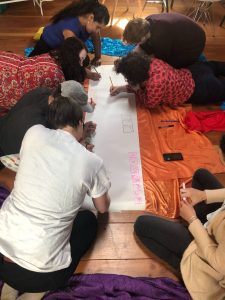
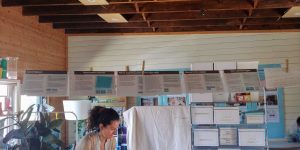
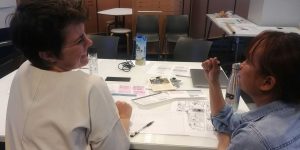
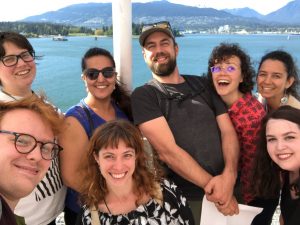
DAY 2: Social Science & Policy Day
Setting: Sarah’s Place (BC), RBC Innovation Room (ON)
Aim: Learn InWithForward’s approach to theory of change, look into current policy signals
Day two had a busy start, finishing up storyboards from the day before. The Surrey team’s last-minute venue was abuzz with teams drawing characters and talking through kinks in narrative.
Toronto & Surrey teams united over a video call and scored an exciting lesson on theory of change, InWithForward style. The focus was on building connection to outcomes through every interaction, using behaviour change theory and methods from service design. You may have thought that was a sarcastic “exciting” – but no – Bronfenbrenner, Bandura, and Michie, oh my! We learned to work backwards from outcomes. Outcomes can be broken down into what people do, say, think, and feel when living the life that they value. We ask: what is it, really, that we’re trying to get to with these big ideas? What are the determinants that lead to those outcomes? Which interactions develop positive determinants and bust barriers?
Applying Behavioural Change Science
Going a little more granular, we examined which of InWithForward’s 7 Mechanisms of Change (page 13) interactions might employ. We pondered, we stretched our brains, we scribbled.
And then we had donuts, and it was officially a great day.
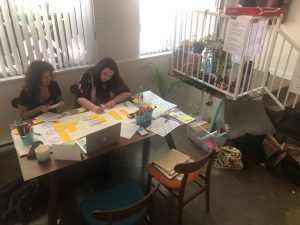
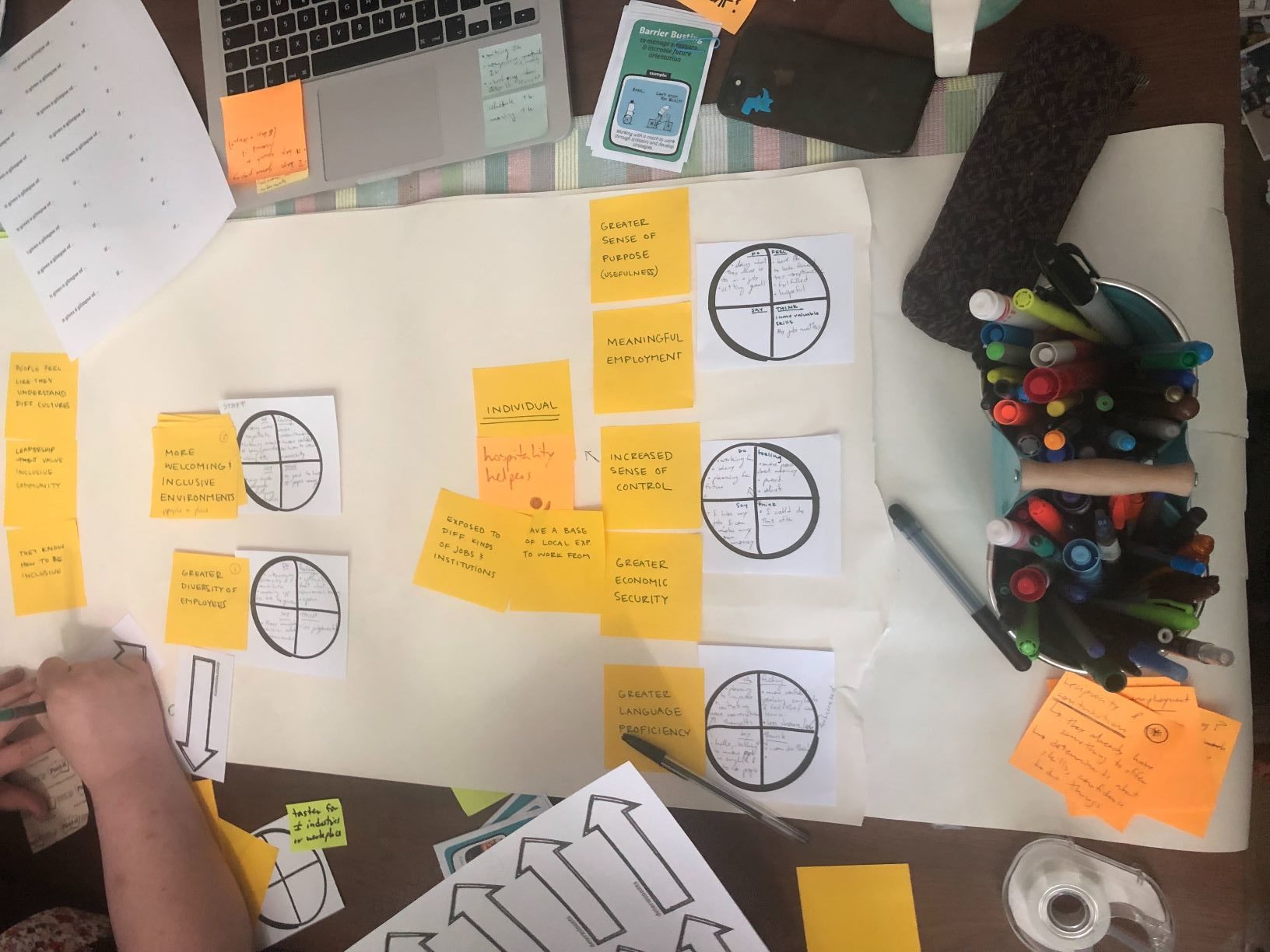
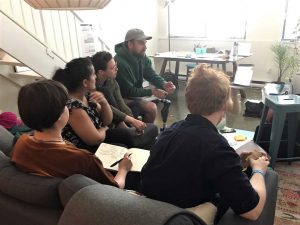
DAY 3: Business and Role Play Day
Setting: Khim’s House (BC), RBC Innovation Room (ON)
Aim: Do a market analysis, differentiate from what’s out there, consider modes of spread
On the final day, the countdown was on: 3:30pm was our hard deadline to present ideas to a panel of advisers. World’s most gracious of hosts, Khim, provided a lovely setting. It came with plenty of nourishment, and an emotional support dog to get us through the day.
Modes of Spread fill our Heads
The Surrey team pep talked the Toronto team, who was three hours closer to their deadline. Today we were challenged to make the case for why our idea should exist in the market.
We learned about various modes of spread: Expansion (think Starbucks), Self-organization (think Alcoholics Anonymous), Network (think Scouts Canada), Accreditation (think Zumba), and Co-production (think Wikipedia)!
Alongside modes of spread we considered types of ownership, from concentrated, centralized, high fidelity models (like Ted Talks), to distributed, grassroots models with less control (think TedX, or The ALS Association’s Ice Bucket Challenge). Seeing our ideas through this prism allowed us to see how choices might affect feasibility, desirability, and impact.
Failing Fast with Friendly Judgement
Then it was off to the races – each team making creative choices about how to present key ideas. Our storyboards came to life, weaving in the experiences of the very newcomers we met at the start of this process. We designed scripts to imagine how they would interact with each idea, based on the precious time we’ve spent together.
On the West coast, the day ended with Grounded Space Playhouse – two live role plays and one puppet show. On other side of the Rockies and the Great Plains, teams presented to what was dubbed “The Panel of Friends.” These unintimidating sector experts assessed each idea for timing, believability, feasibility, and other factors. While unclear heading into our last day, we ultimately agreed there’s nothing like a deadline and some outside feedback. After medals and podiums, it’s the best way to end a sprint.
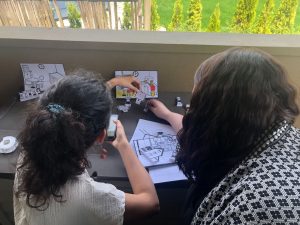
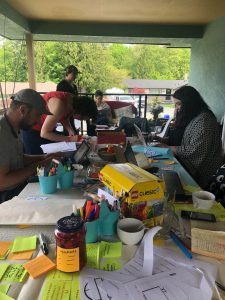
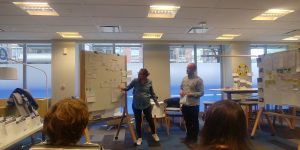
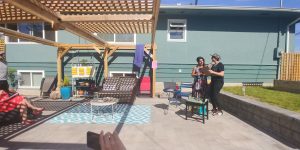
So, what are our 6 ideas!?
Eh, there is a website coming soon… To show you I’m a woman of my word, here’s the aforementioned dog, Spirou, who got us to the end of the sprint and should hold you over until our big reveal. Soon, we’ll co-design the ideas with people who will use them!
